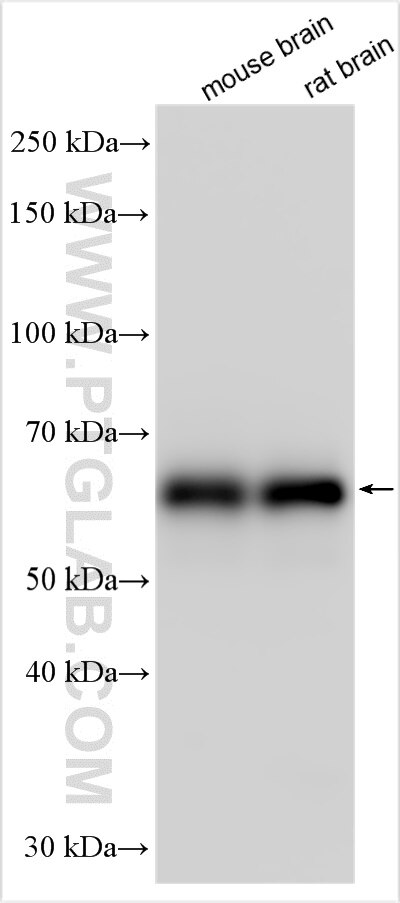Validation Data Gallery
Filter:
Tested Applications
| Positive WB detected in | rat brain tissue, mouse brain tissue |
Recommended dilution
| Application | Dilution |
|---|---|
| Western Blot (WB) | WB : 1:5000-1:50000 |
| It is recommended that this reagent should be titrated in each testing system to obtain optimal results. | |
| Sample-dependent, Check data in validation data gallery. | |
Product Information
31655-1-AP targets CACNB3 in WB, ELISA applications and shows reactivity with human, mouse, rat samples.
| Tested Reactivity | human, mouse, rat |
| Host / Isotype | Rabbit / IgG |
| Class | Polyclonal |
| Type | Antibody |
| Immunogen | CACNB3 fusion protein Ag35651 相同性解析による交差性が予測される生物種 |
| Full Name | calcium channel, voltage-dependent, beta 3 subunit |
| Calculated molecular weight | 55kDa,484aa |
| Observed molecular weight | 60 kDa |
| GenBank accession number | NM_000725.3 |
| Gene Symbol | CACNB3 |
| Gene ID (NCBI) | 784 |
| RRID | AB_3670064 |
| Conjugate | Unconjugated |
| Form | Liquid |
| Purification Method | Antigen affinity Purification |
| UNIPROT ID | P54284 |
| Storage Buffer | PBS with 0.02% sodium azide and 50% glycerol , pH 7.3 |
| Storage Conditions | Store at -20°C. Stable for one year after shipment. Aliquoting is unnecessary for -20oC storage. |
Background Information
CACNB3, also known as CACNLB3, is a voltage-gated Ca2+ channel subunit. It has 5 isoforms and may play a role in the regulation of transcription factors and calcium transport.
Protocols
| Product Specific Protocols | |
|---|---|
| WB protocol for CACNB3 antibody 31655-1-AP | Download protocol |
| Standard Protocols | |
|---|---|
| Click here to view our Standard Protocols |
